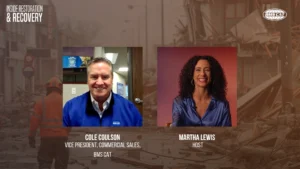The Art of Waiting: 8-Second Surveys Capture Customer and Employee Satisfaction for Actionable, Data-Centric Decisioning
Erik Berg, VP of marketing at Nemo-Q, explained to Host Tyler Kern the benefits and ease of utilizing the 8-second survey.
8-second surveys gather data on the intended audience’s experience. It can be used to measure customer satisfaction of a product or service and even employees’ morale at the company.
Why 8-seconds? Nemo-Q ran some market research on surveys and found that most people who start a lengthy survey abandon it within 10 seconds. Therefore, they created the 8-second survey.
“The idea is to gather enough pertinent information in eight seconds to have actionable data. So in eight seconds, through a series of smiley faces and short answer questions, we’re able to get enough information to make changes the next day,” said Berg.
While most immediately think of customer experience surveys, Berg highlighted the benefit of obtaining employee feedback more frequently than your typical once-per-year survey. Similar to customer experience surveys, an employee pulse survey can build trends to help prevent turnover and increase employee morale.
“People start off with the customer experience. They see how we analyze the data for them. We’re actually able to give them recommendations on actions they can take, new questions they can ask,” Berg continued. “And they say, ‘Wow, look how quickly I can effectively change my business, and why not change the morale of the company in the same way?’”
Nemo-Q approaches surveying with a curiosity to know more. To obtain more data intelligence, a customer who rated a business poorly may receive a follow-up question specific to their experience. For instance, was it lack of staff friendliness or lack of facility cleanliness that led to that rating? These two questions provide significant insight into the “why” while only increasing the survey length by a second.
The bottom line: Nemo-Q helps create a culture of action to move companies forward in a creative, quick, and efficient capacity.









